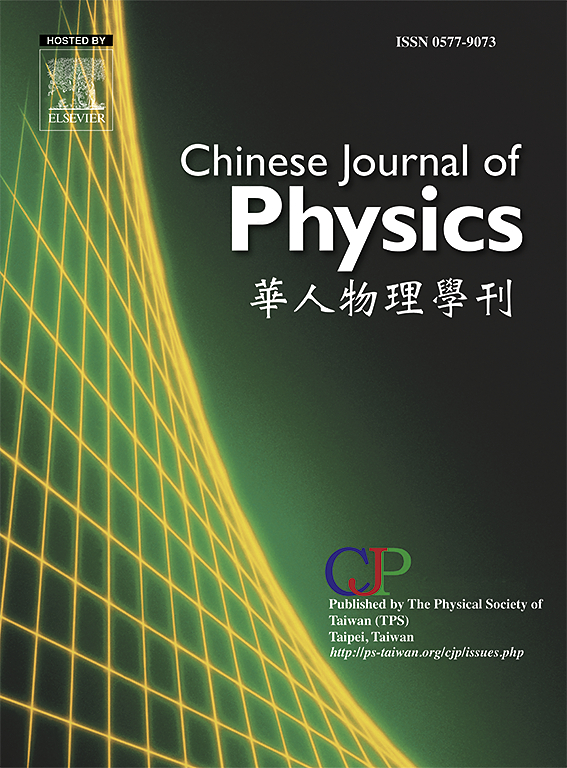Photoinduced Two-Dimensional Supramolecular Chiral Microstructures with Enhanced Stability
IF 4.6
2区 物理与天体物理
Q1 PHYSICS, MULTIDISCIPLINARY
引用次数: 0
Abstract
Periodic microstructures are essential for controlling optical and mechanical properties but remain difficult to fabricate with precision and scalability, and conventional methods are costly and rigid. Thus, self-assembling and tunable alternatives are needed. Stimulus-responsive anisotropic soft matter offers a promising solution because it can spontaneously form micro- and nanoscale periodic superstructures with high tunability for functional device design. However, these superstructures rely on a delicate balance of multiple forces, so they are vulnerable to external perturbations and often have a short lifespan, which is a key challenge in the field. This study investigates photoinduced Helfrich deformation in chiral azobenzene-doped cholesteric liquid crystals (CLCs) and compares the resulting microstructures in systems with and without bent-mesogenic dimers. The dimers exhibit an exceptionally low bend elastic constant that governs the resistance of the LC system to bending deformation. During the cis-trans photoisomerization of chiral azobenzene, stress accumulation due to the shortening of the helical pitch, leading to the formation of a two-dimensional supramolecular chiral microstructure. Furthermore, applying an auxiliary voltage lower than the threshold of the electro-induced Helfrich deformation considerably enhances the stability of the microstructure, and the stabilization effect increases in the samples containing dimers. At voltages lower and higher than the threshold, the microstructures eventually transform into a planar state and a hybrid state with fingerprint and focal conic textures, respectively. This study opens a new avenue for expanding the applicability of Helfrich deformation and provides insights into the stability control of periodic microstructures in soft matter physics, providing valuable reference for the fields of optics and photonics.

具有增强稳定性的光诱导二维超分子手性微结构
周期性微结构对于控制光学和机械性能至关重要,但仍然难以精确和可扩展性地制造,并且传统方法成本高且刚性强。因此,需要自组装和可调的替代方案。刺激响应的各向异性软物质为功能器件设计提供了一个很有前途的解决方案,因为它可以自发地形成具有高可调性的微纳米级周期性超结构。然而,这些上层建筑依赖于多种力量的微妙平衡,因此它们容易受到外部扰动,并且通常寿命较短,这是该领域的一个关键挑战。本研究研究了手性偶氮苯掺杂胆甾液晶(CLCs)的光诱导helrich变形,并比较了有和没有弯曲介观二聚体系统的微观结构。二聚体表现出非常低的弯曲弹性常数,这决定了LC系统对弯曲变形的阻力。手性偶氮苯在顺反光异构化过程中,由于螺旋节距的缩短,应力积累导致二维超分子手性微观结构的形成。此外,施加低于电致helrich变形阈值的辅助电压可以显著提高微观结构的稳定性,并且在含有二聚体的样品中稳定化效果增强。当电压低于阈值和高于阈值时,微结构最终转变为平面态和混合态,分别具有指纹和焦点锥形纹理。该研究为扩展helrich变形的适用性开辟了新的途径,为软物质物理中周期微结构的稳定性控制提供了新的见解,为光学和光子学领域提供了有价值的参考。
本文章由计算机程序翻译,如有差异,请以英文原文为准。
求助全文
约1分钟内获得全文
求助全文
来源期刊

Chinese Journal of Physics
物理-物理:综合
CiteScore
8.50
自引率
10.00%
发文量
361
审稿时长
44 days
期刊介绍:
The Chinese Journal of Physics publishes important advances in various branches in physics, including statistical and biophysical physics, condensed matter physics, atomic/molecular physics, optics, particle physics and nuclear physics.
The editors welcome manuscripts on:
-General Physics: Statistical and Quantum Mechanics, etc.-
Gravitation and Astrophysics-
Elementary Particles and Fields-
Nuclear Physics-
Atomic, Molecular, and Optical Physics-
Quantum Information and Quantum Computation-
Fluid Dynamics, Nonlinear Dynamics, Chaos, and Complex Networks-
Plasma and Beam Physics-
Condensed Matter: Structure, etc.-
Condensed Matter: Electronic Properties, etc.-
Polymer, Soft Matter, Biological, and Interdisciplinary Physics.
CJP publishes regular research papers, feature articles and review papers.
 求助内容:
求助内容: 应助结果提醒方式:
应助结果提醒方式:


